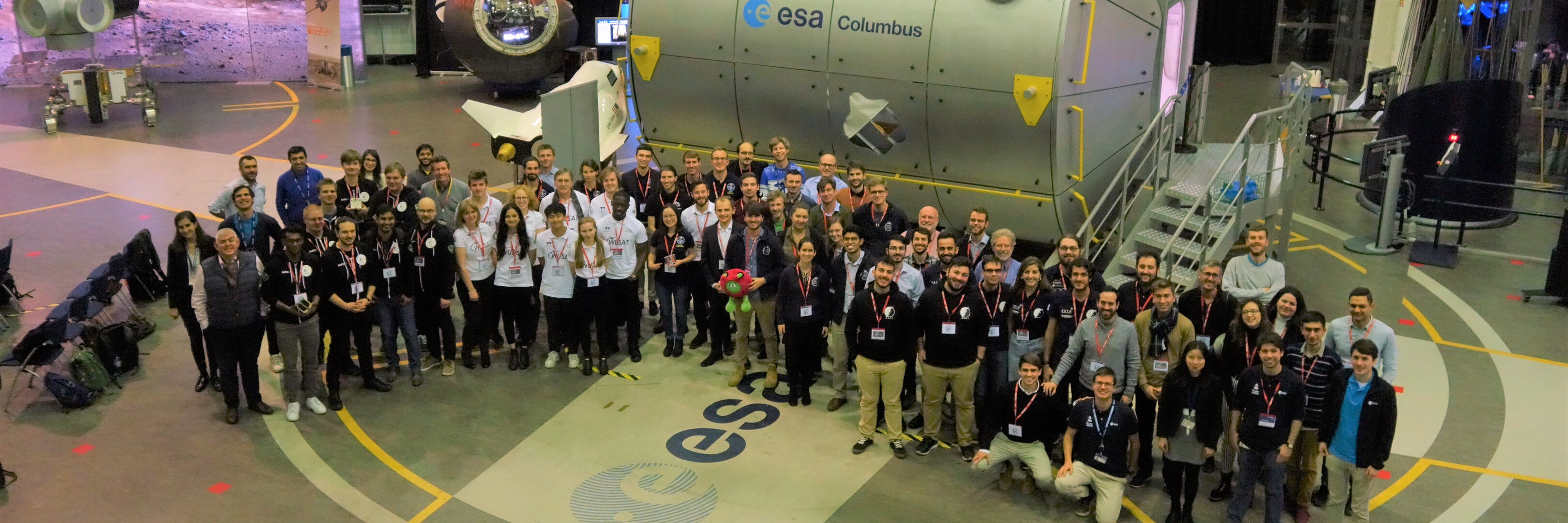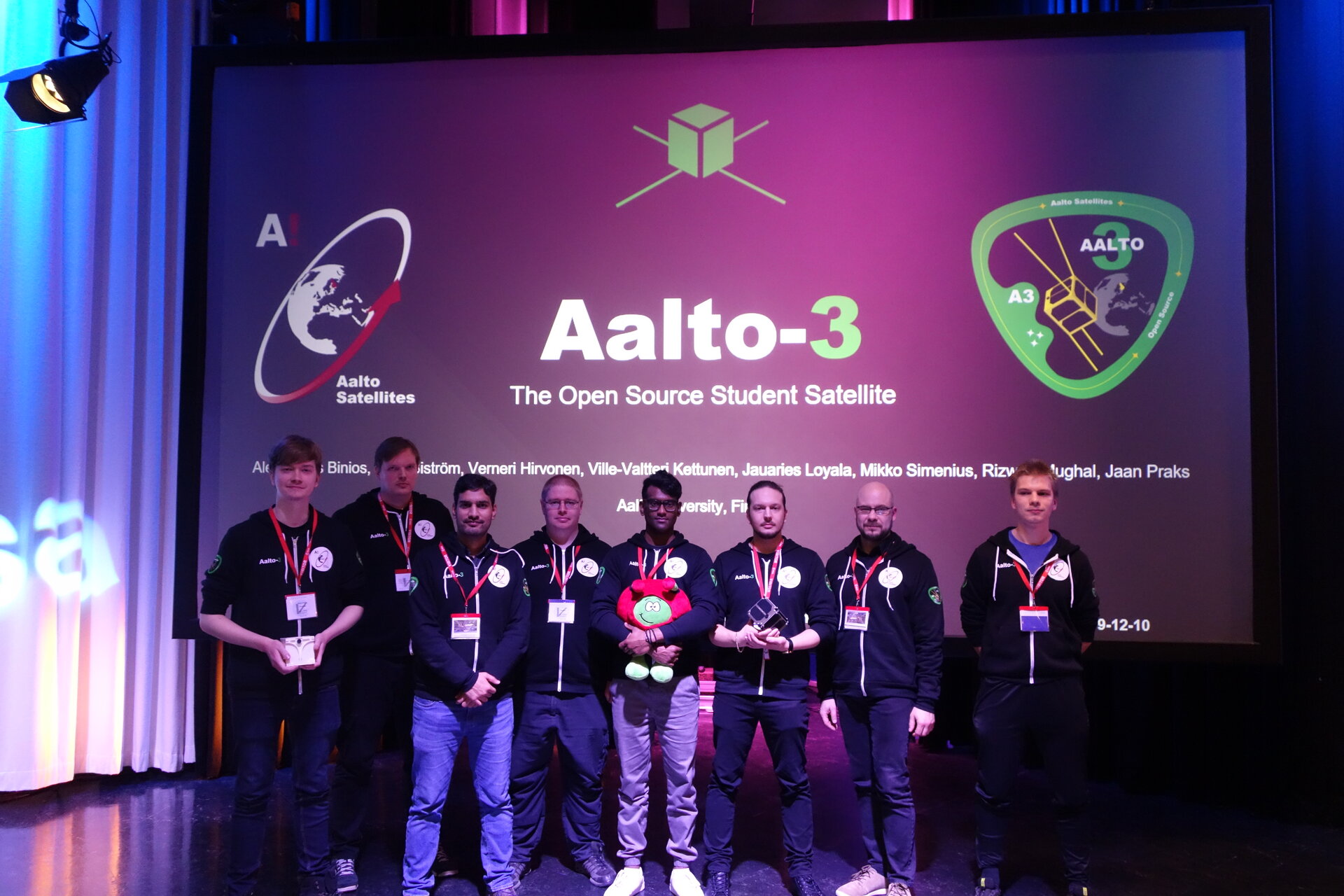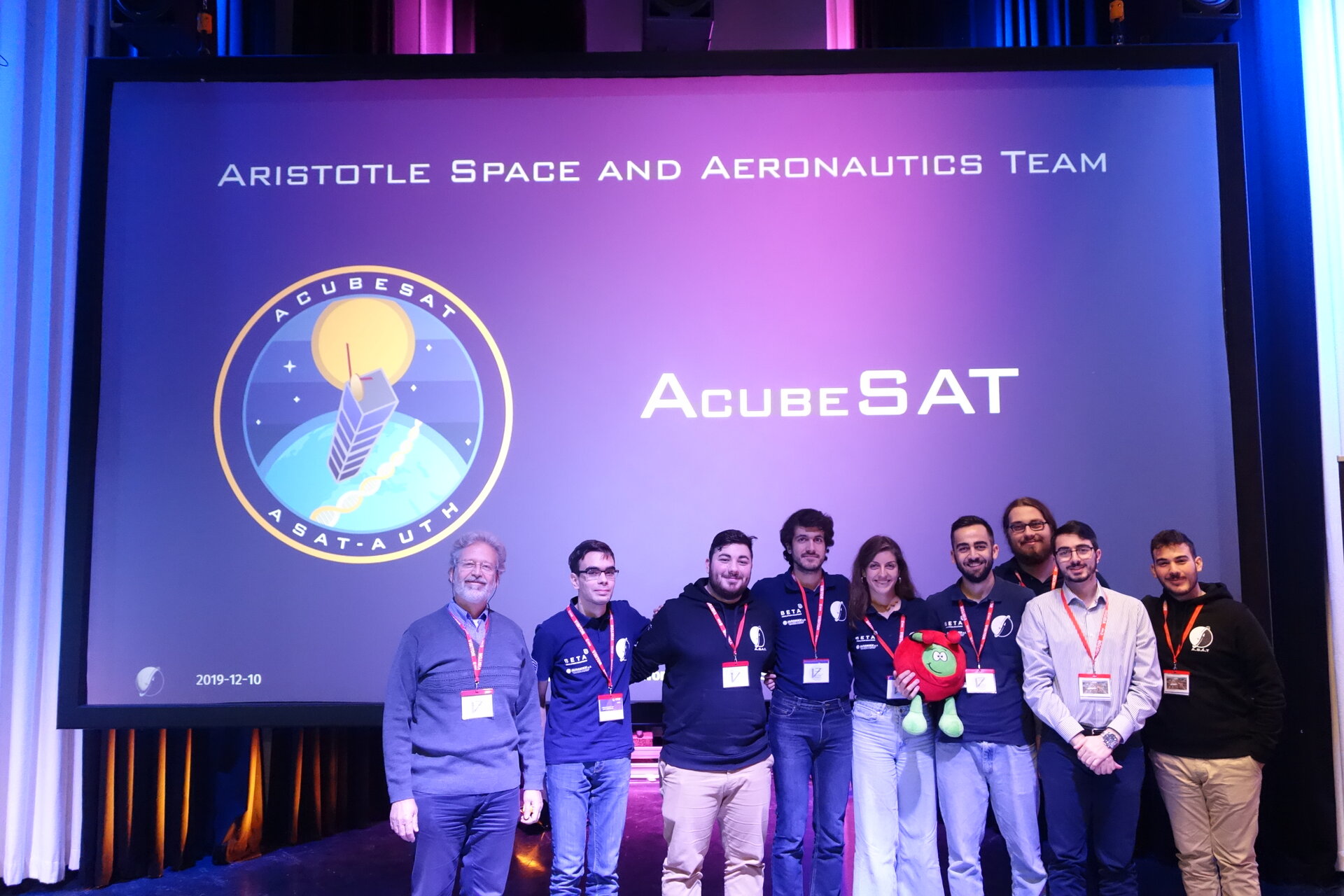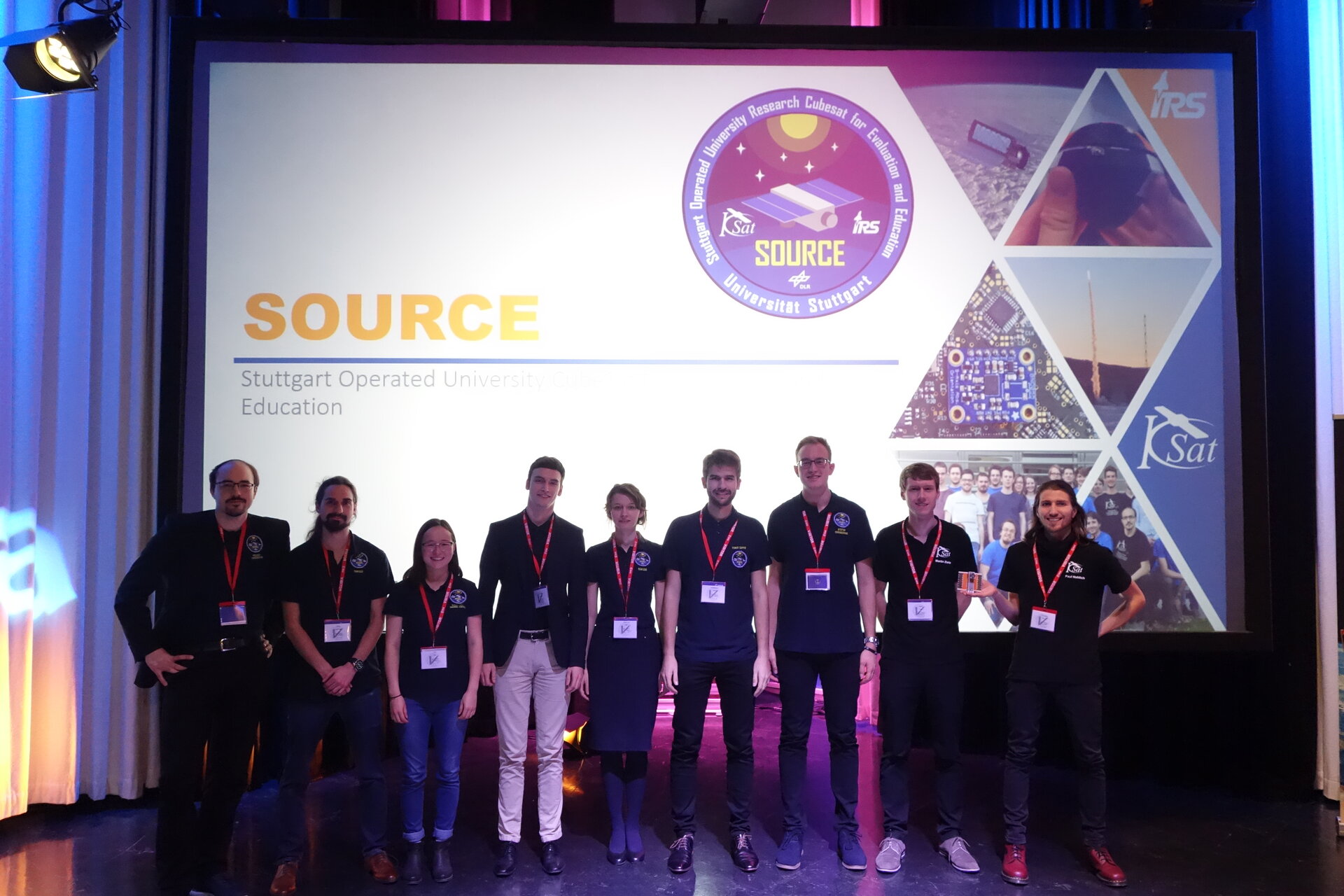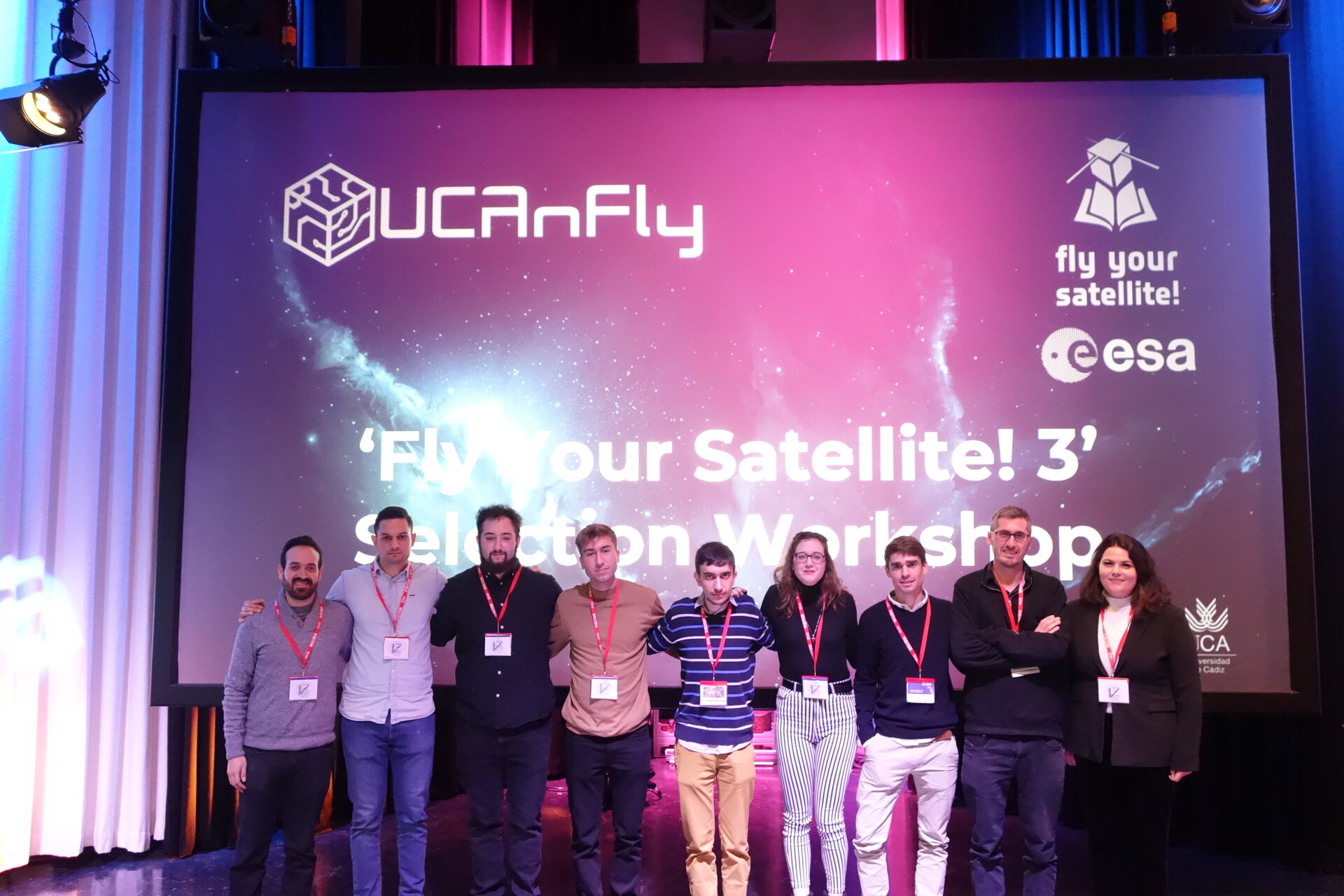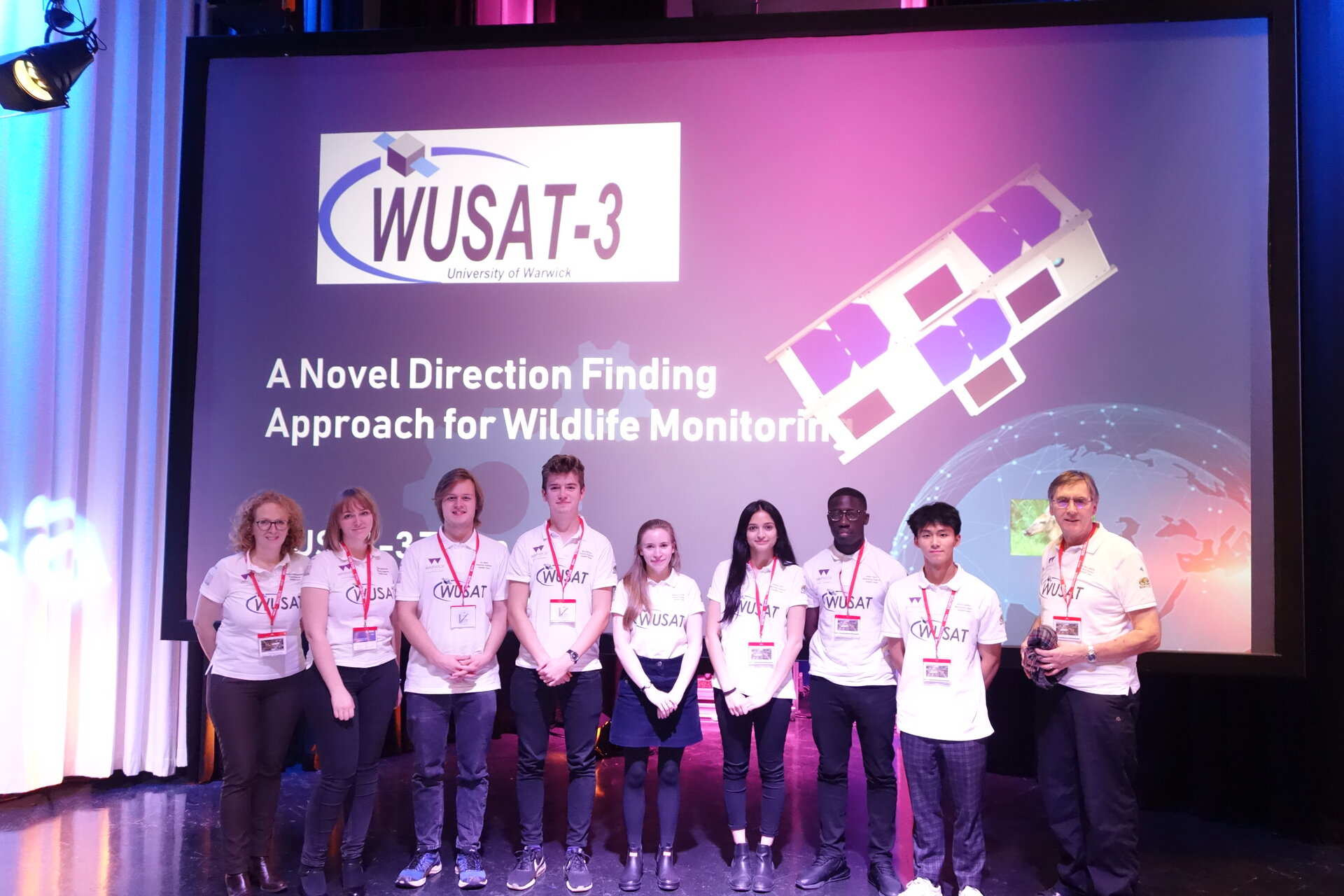University teams rose to the challenge during ‘Fly Your Satellite!’ Selection Workshop this week
For the past week, 9-13 December 2019, 60 university students representing seven teams from seven universities have been taking part in ESA Education’s Fly Your Satellite! Selection Workshop, hosted at ESTEC (European Space Research and Technology Centre). These participants were vying for the chance to be accepted to the Fly Your Satellite! programme, in which they will design, test and launch their own CubeSat – a miniature fully-functional satellite – into space! Having successfully completed the proposal and short-listing processes earlier this year, the Selection Workshop was the mandatory next step toward admission to the programme.

"Amazing attendees, extraordinary experiences, fascinating facilities, outstanding organisers, praiseworthy presentations.", said one of the participating students.
The participating teams and their missions were:
- Aalto-3, Aalto University, Finland: demonstrate complex signal analysis with a Software-Defined Radio payload.
- AcubeSAT, Aristotle University of Thessaloniki, Greece: demonstrate lab-on-a-chip technology for biological experiments in Low Earth Orbit.
- CLIMB, University of Applied Sciences Wiener Neustadt, Austria: use a propulsion system to reach the inner Van-Allen belt and measure the radiation environment.
- MIST, KTH Royal Institute of Technology, Sweden: characterise the radiation environment and radiation effects in Low Earth Orbit.
- SOURCE, University of Stuttgart, Germany: image meteors during entry into Earth’s atmosphere, and characterise re-entry of the CubeSat.
- UCAnFly, Universidad de Cadiz, Spain: measure magnetic fields with low noise using shielded magnetoresistive sensors.
- WUSAT-3, University of Warwick, United Kingdom: demonstrate a signal direction finding payload to locate wildlife tracking tags.

The students presented their projects to a panel of ESA experts and they were questioned on various aspects of their missions during a subsequent question and answer session. Students were required to justify design decisions to the panel, proving that they and their missions have what it takes to be successful. A set of lectures were offered by ESA specialists, dedicated to equipping potential teams with the knowledge and resources necessary to undertake the first milestones of the Fly Your Satellite! programme. The topics of the lectures included project level activities, such as Assembly, Integration and Verification, Product Assurance and CubeSat reliability or Space Debris Mitigation, as well as technical content on the subsystems of a satellite.
"Saw many interesting missions and got expert feedback to our own! Inspiring and educational expert talks, motivational and fun exchanges with peers, a great and healthy atmosphere. The FYS!3 selection workshop was a very enjoyable and memorable experience, with the possibility of establishing new contacts and fostering existing ones!", said another student.
The students will now wait for the evaluation outcome and to find out if they can progress to the first phase. Successful teams will then be challenged to submit their satellite design for the Critical Design Review. ESA reviewers will assess the readiness and maturity of the project and help to identify any blocking points to be resolved by students in order to pass the Critical Design Review.


